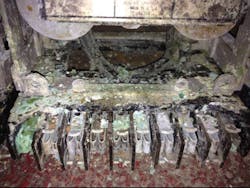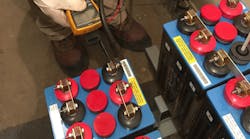Utility personnel at Con Edison’s East River substation in lower Manhattan remember vividly how quickly water from Hurricane Sandy’s storm surge rose, prompting a speedy retreat to the upper floors of the facility’s offices.
Four hours later the water had receded, leaving behind a wide swath of destruction —a total of 1.1 million customer outages; the loss of 4K MW of generation, five transmission substations, and 60% of Con Edison’s 345 kV feeders. Steam and gas services were also impacted.
The devastation caused by Hurricane Sandy led to the biggest single initiative in Con Edison’s history, the four-year, $1B “Fortifying the Future” Storm Hardening Program. Involving 21 generating stations and substations, the company-wide initiative extends to electric, gas, and steam.
The project is now nearing completion, with final approvals for the last phase expected in June 2018.
In December 2016, T&D World reported on the details of the East 13th substation improvements, which included a new elevated control room, a new fiber optics backbone network, perimeter wall and doors gates hardened for storms, new 345 KV breakers and disconnect switches, and a new digital control system.
A Five-Year Plan for Storm Resiliency
Kevin Davis, Lead Project Engineer for the initiative for substations and generating stations, recalled the utility’s immediate response in the aftermath of Sandy: “Obviously restoration of service was the first priority, followed by the repair of any damaged equipment. What we did next was to send multi-disciplinary teams to all of our impacted stations to identify critically impacted equipment and water damage.”
The big difference was in what came next: The formation of a collaborative that included Con Edison and its regulators, the New York attorney general and the mayor’s office, and environmental groups, brought together to provide input and assist in developing a long-term storm resiliency plan. Work ranged from studies on the expectations for sea level rise to risk prioritization and project justification.
“Prior to Sandy, we were purely reactive to events, but that only works for so long. You know of the top 10 storms, half have occurred in the last decade,” said Davis. “What we did with this project is to come up with a final design that meets new, FEMA 100-year flood level + 3 ft predictions.”
That design incorporates what Con Edison calls “Defense in Depth,” essentially four levels of flood protection defined as:
Level 1: Perimeter Protection
Level one perimeter protection was installed and/or reinforced at 14 stations, consisting of reinforced concrete, sheet steel, and flood barriers. Aluminum doors were also installed, fabricated of individual slats that come apart and are light and easy to deploy. Some doors are made of Kevlar with a pocket at the bottom, containing lead shot for weighting. Should the site flood, the weight of the water will create the seal and ultimately provide a protective barrier.
Level 2: High-capacity Pumps
Level two protection includes diesel-driven and electric high-capacity pumps with redundant features.
Level 3: Interior Protection
Level three interior protection includes moats and compartments and elevated platforms (or platforms that can be elevated in the event of flooding). Conduit seals, normally used for fire protection but which can also withstand water, were installed to protect pipes located at flood-level height.
Level 4: Deployable Measures
Level four protection includes deployable measures such as HESCO barriers, mobile diesel pumps, and shrink wrap covers to protect equipment and electrical panels that cannot be elevated.
As the initiative edges toward completion, Davis notes that other organizations, including the New York MTA and the Brooklyn Navy Yard, are using Con Edison to benchmark their own storm readiness efforts.
Not a bad strategy, given how Davis summed things up: “It’s our belief that in the future if Sandy or something even bigger than Sandy comes [up to the FEMA 100-year flood level + 3 ft predictions], we’re ready.”



